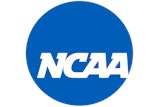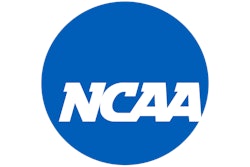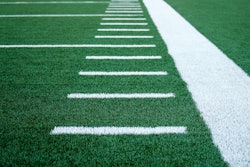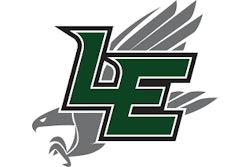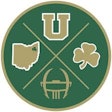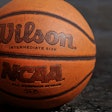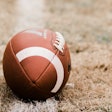Monitoring Academic Performance

Academic performance among collegiate student-athletes has rarely been under more scrutiny than it is now. Despite NCAA statistics that indicate graduation rates among Division I and Division II student-athletes eclipse those of the general student body at those levels (Division III schools don't track athletes' graduation rates), embarrassing episodes - from a star linebacker's lightweight summer school curriculum to an advisor's role in a paper-writing scam - have garnered the lion's share of headlines in recent years.
The NCAA's graduation-rate figures, spawned by a formula that has drawn its own share of scrutiny, nonetheless reveal an unsettling trend: graduation rates among Division I football and men's and women's basketball scholarship recipients are at their lowest level in seven years.
Released last fall, the NCAA graduation-rate report attempts to show what percentage of scholarship student-athletes earned degrees from any given NCAA member institution within six years of enrolling at that school. The formula, in a statistical sense, penalizes institutions from which a scholarship student-athlete transfers to another school, even if the athlete ultimately earns a degree.
"One of the things that's clear is that we are going to have to have some definition of progress rather than graduation," says Kenneth Shaw, chair of the NCAA Division I Working Group to Study Basketball Issues. "More than half of the students in higher education transfer at one point or another to another school. We'll have to have a definition of 'good standing' that in effect shows that whenever you left, for whatever reason, you were on a trajectory to graduate."
For now, the working group has proposed rewarding basketball programs that graduate at least 75 percent of their athletes with an extra scholarship (to go with the 13 currently allowed by the NCAA). Programs that fail to graduate a minimum of 35 percent of their players would be stripped of a scholarship.
Shaw says tougher standards would be in order if graduation rates no longer serve as the measuring stick. "If you redefine it from 'graduation rate' to 'in good standing,' you probably ought to be raising your reward percentage to 90 percent, and you ought to be raising your penalty percentage to 50 or 60 percent."
According to the NCAA report, the University of Dayton and the University of New Hampshire both reached an average graduation rate of 95 percent for all scholarship athletes who enrolled from 1989 to 1992 - tops in Division I.
At Dayton, where football is not a scholarship sport, all freshman student-athletes are assigned eight or more hours of study hall each week for at least one semester, depending on the athlete's grade-point average and test scores. An academic center is open 76 hours a week and provides computer access to 20 student-athletes at a time. During high-traffic evening hours, student-athletes are directed to a campus library's sixth floor, which is reserved for their use. Three paid student workers make sure that the student-athletes check in and out and stay on task while there.
Don Ross, Dayton's assistant director of athletics for compliance and academic services, then adjusts the number of study-hall hours for each freshman student-athlete based on midterm grade reports issued by the university. Fall athletes who have demonstrated the ability to handle the burden of travel and the occasional missed class while still earning a 3.0 GPA or better are exempted from required study hall during second semester. "If they can handle all of that, then I know they're going to graduate," Ross says. "We get midterm grades second semester, too. If their grades have dropped down, we pull them right back in."
Though New Hampshire imposes no study hall requirements, officials there also regard the first year on campus as critical. Athletes meet with advisors in specific colleges to identify an academic major and begin scheduling corresponding core courses. "That gets them on a track to graduate right there," says Joanne Moldari, academic support services coordinator within UNH's athletic department. Moldari then educates the advisors as to the practice demands on each student-athlete so that class schedules are selected to facilitate attendance.
In addition, an academic advisory committee - including Moldari, the athletic director and senior associate athletic director, as well as deans, associate deans and advisors from all five colleges within the university - meets monthly to keep athletics and academics personnel updated on policies relevant to the academic success of student-athletes.
Bucknell University, the only school to rank among the top 10 Division I institutions in each of four graduation-rate categories (all sports, football, men's basketball and women's basketball), supplies its first-year student-athletes with a 22-page handbook that includes a calendar and weekly time budget. According to Rose Ewan, Bucknell's associate director of athletics, student-athletes are instructed to transfer a semester's worth of important dates from course syllabi to the calendar. They are then shown how to budget time. "We'll take someone's schedule, put it up on the blackboard and say, 'This is the number of hours you have in class. You give three hours per class for homework, and you put in your two hours of practice time. Look at how much time you have. There's just not too much time left in the day,' " Ewan says. "That sort of opens up their eyes."
Further enlightenment results from Bucknell's sideline program, in which select faculty are invited to observe practices and games from field level. "That gives our faculty an appreciation for what our athletes are going through," Ewan says, adding that she feels student-athletes become less reluctant to seek academic help from an instructor who has shown an interest in athletics through the sideline program.
Many schools have taken a more businesslike approach toward ensuring academic success. At Ohio State University, which ranked last in the Big Ten Conference with an average graduation rate of 55 percent for all scholarship athletes who entered school from 1989 to 1992, contracts signed last fall by football coach John Cooper and men's basketball coach Jim O'Brien are tailored to spark an academic turnaround. Cooper will collect $20,000 if 50 percent of his players graduate within six years, $50,000 if 60 percent graduate, and $100,000 if 70 percent graduate. An additional clause, which rewards Cooper for GPA improvement exhibited by players from autumn to spring, raises the annual bonus ceiling to $175,000. "He's always had some academic incentives, but these are different and stronger," says Andy Geiger, Ohio State's director of athletics.
O'Brien gets an extra $35,000 annually if at least 60 percent of his players receive degrees. And though academic performance incentives have yet to be included in the contracts of other OSU head coaches, Geiger says it's possible he will "spread the concept."
Geiger's department has also taken a lead role in funding the construction of Ohio State's $9 million Younkin Success Center, the third floor of which houses a student-athlete academic support staff of 12, as well as computer labs, tutoring rooms and large study areas available exclusively to student-athletes.
Shaw says recommendations of the Division I Working Group to Study Basketball Issues, if adopted, would not likely take effect before the fall of 2001. Meanwhile, schools continue to seek other ways to make the grade, or to tweak the monitoring process.
"There's no simple formula," says Dan Cashel, senior assistant athletic director at Division II Drury University, which posted a respectable graduation rate of 81 percent for all of its student-athletes who entered school in 1992-93, according to the NCAA. However, Cashel subscribes to his own set of numbers. "For our own little study, we just decided not to worry about transfers, just whether they finished their college eligibility here," he says. "If they did, whether they played one year or four years, did they graduate?"
By that standard, more than 90 percent of Drury's scholarship and non-scholarship athletes have, and the numbers are even more impressive for the school's spotlight program - men's basketball. Cashel has found that 69 out of 70 athletes listed as seniors on Panther men's basketball rosters over the past 20 years earned their college degrees from Drury.














